A practical and relatively inexpensive motherboard for systems based on Ryzen processors of medium to high performance is on the agenda. ASUS ROG STRIX B550-XE GAMING WIFI stands out not only for the presence of a Wi-Fi module (as the name implies), but also for an additional expansion card, which significantly increases the number of installed high-speed drives. But first things first.
Specifications
- Form factor: ATX (305 × 244 mm).
- Processor socket: Socket AM4.
- System logic: AMD B550 Chipset.
- RAM: 4 × DIMM, DDR4-2133… 4866, up to 128 GB.
- Звук: ROG SupremeFX 7.1 (Realtek ALC1220).
- Wired network: 2.5-Gbps Ethernet (Intel I225-V).
- Wireless network: Wi-Fi 802.11ax 2×2, Bluetooth 5.1 (Intel Wi-Fi 6 AX200).
- Expansion slots: 2 × PCIEx16, 2 × PCIEx1.
- Drives: 6 × SATA III 6 Gb / s, 4 × M.2 NVMe / SATA III 6 Gb / s 2280/22110.
- Rear panel: 3 × USB 3.2 Gen 2, 4 × USB 2.0, audio USB Type-C, DisplayPort, HDMI, 2 × SMA, 2.5 Gb Ethernet, 5 × 3.5 mm jack, BIOS FlashBack button.
At the time of this writing, the price of the motherboard is 24,000 rubles.
Equipment
The box is large, roomy, in black and red colors.
Inside there is a complete set of instructions, stickers, cables, adapters. From the additions there are ties and a souvenir – a keychain loop with the ROG logo.
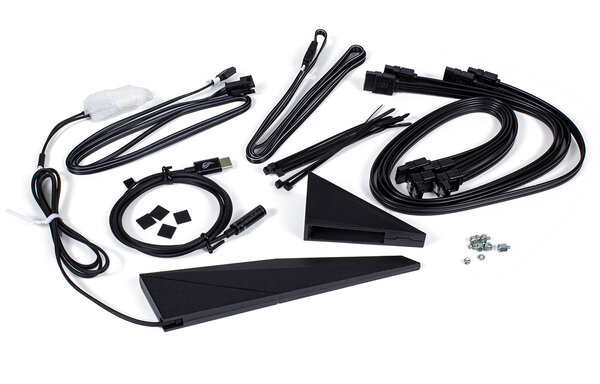
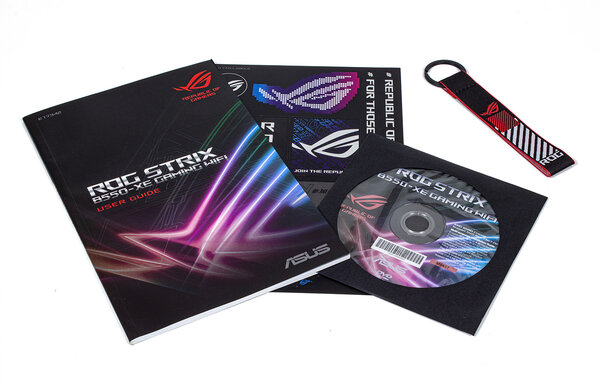
Where does this package size come from? All because of the optional Hyper M.2 x16 Gen 4 Card, designed to accommodate four additional M.2 SSDs.
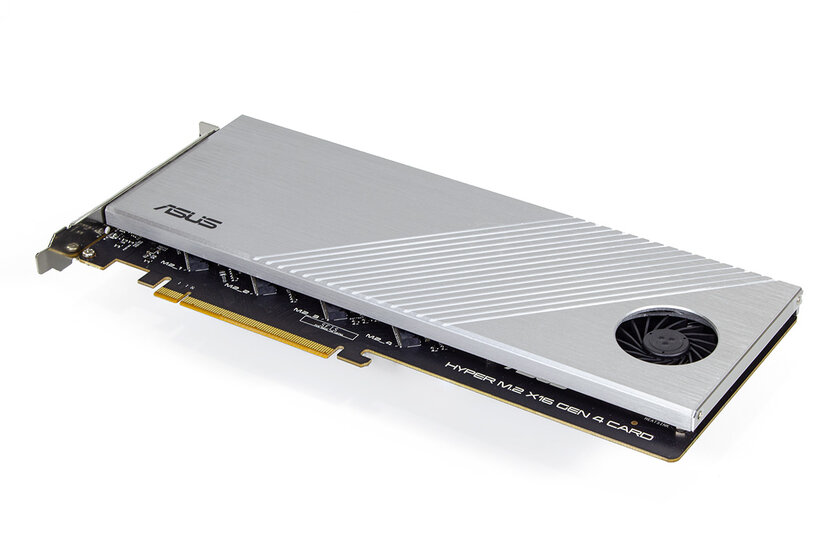
Appearance
STRIX B550-XE GAMING WIFI is a new product for AMD Ryzen processors on the B550 chipset. ATX form factor (305 × 244 mm), the appearance is typical for the ROG series: everything is black, which is not metallic and which cannot be painted. Rapid forms and a solid look are achieved due to large radiators and patterns on them, made by milling or colored stripes.
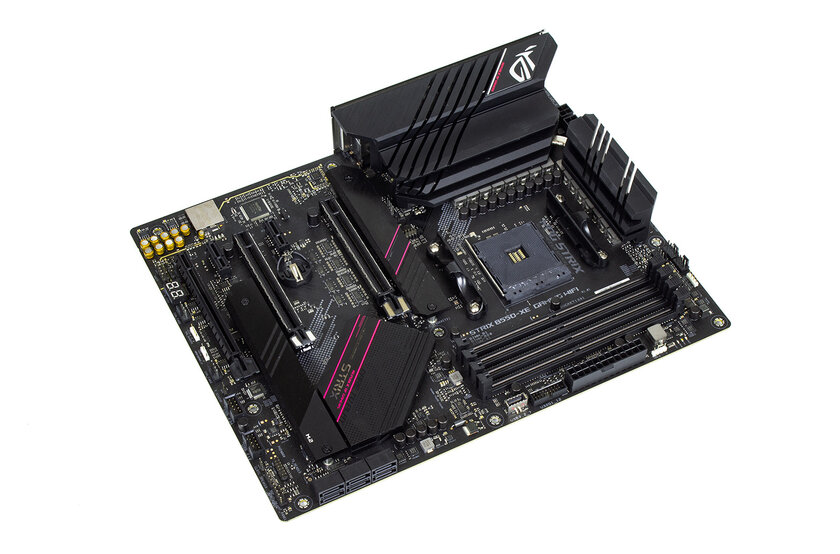
The socket for the Socket AM4 processor, the processors of the 3000, 4000 and 5000 series are supported. Around the socket there is a massive fence from the radiators of the cooling system, which somewhat limits the list of compatible cooling systems.
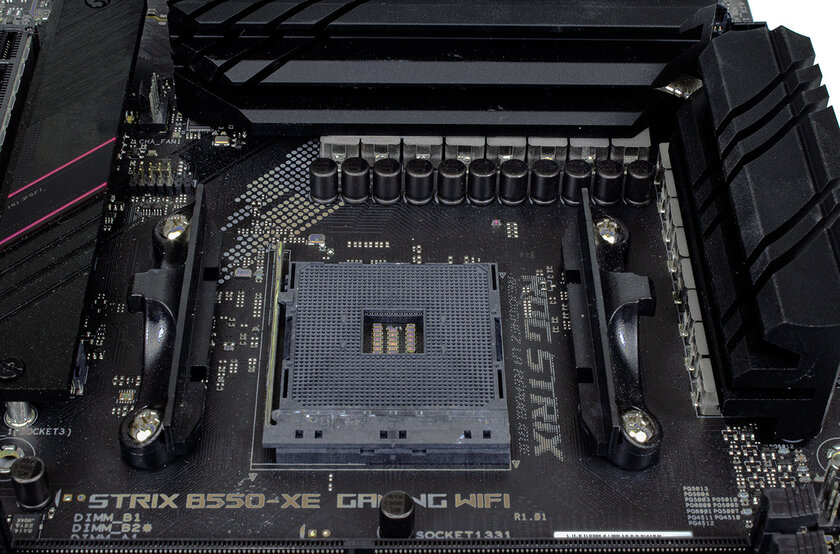
The dimensions of the radiator are much larger than you might think at first glance. It is not only two-piece, but also with an additional baffle on which a 40 mm fan is installed.
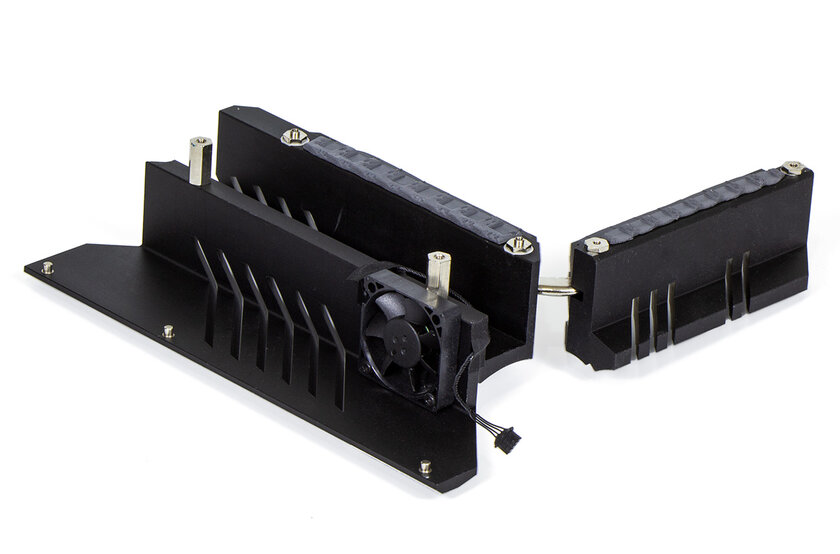
The VRM on the processor is sixteen-phase, the power switches and chokes are placed on both sides of the socket. There are two power connectors, as you can see, for 4 and 8 pins, which allows you to supply more than 300 W of power to the converter.
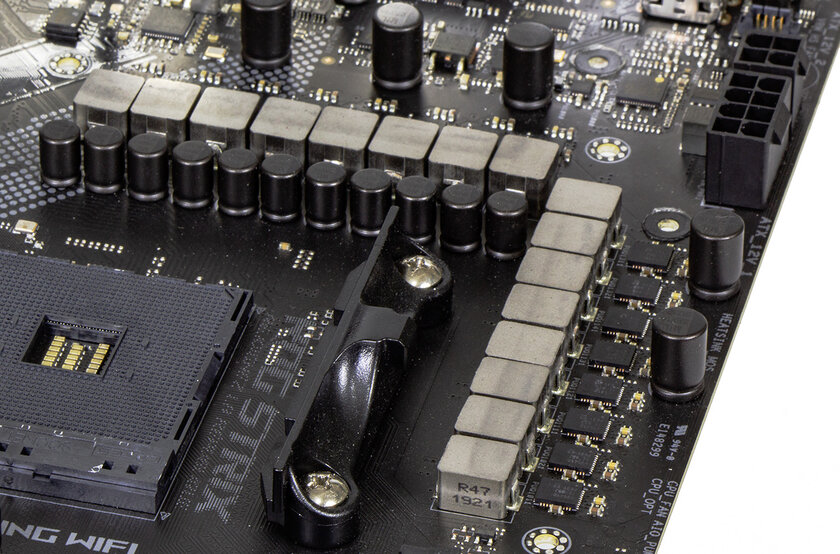
Each phase consists of one Texas Instruments X95410 power assembly capable of carrying up to 90 A of current. The phases are controlled by the ASP1405I controller.
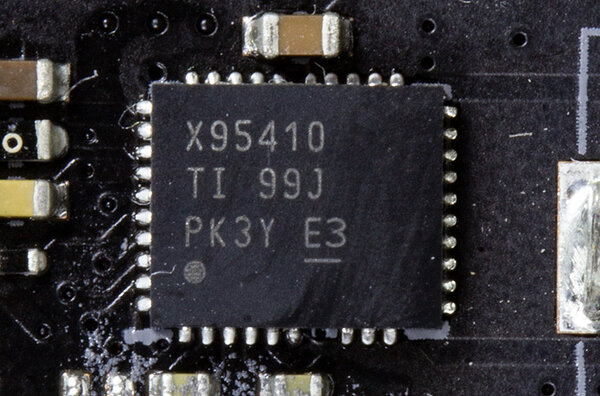
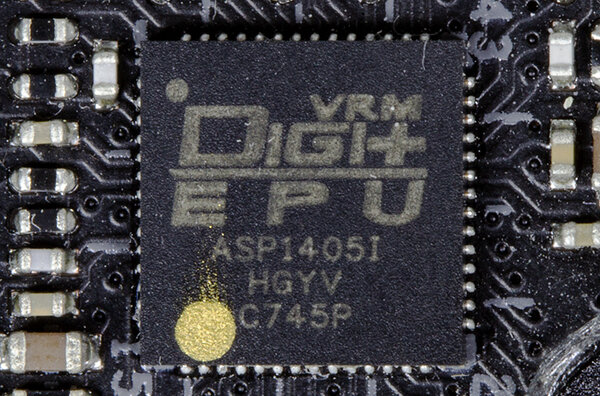
It’s nice to see such an advanced power subsystem on a mid-range motherboard.
There are four slots for RAM, you can install up to 128 gigabytes. The maximum supported frequency is 4866 MHz, but to achieve it you will have to sweat a lot.
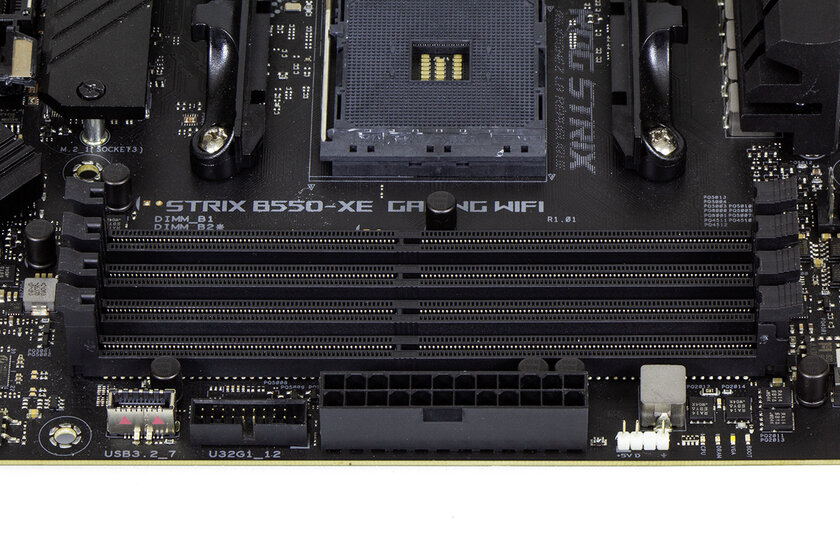
There are five PCI Express slots: three x16, two x1. Three x16 lines are distributed in a standard way: 16-8-4, the first two “hang” on the processor, the third one is provided by the B550 chipset.
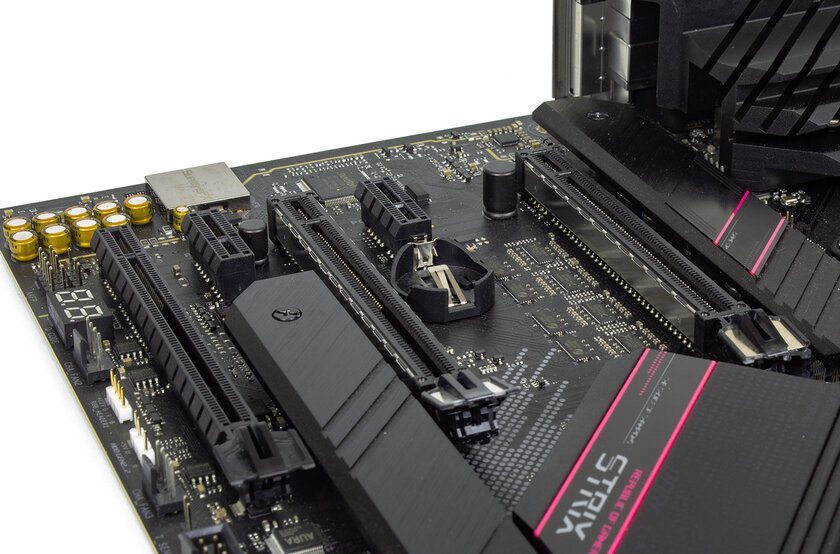
In general, there are few differences between the B550 and the B450: support for PCI Express 4.0 and dual graphics. We also added a USB 3.2 Gen 2 controller.
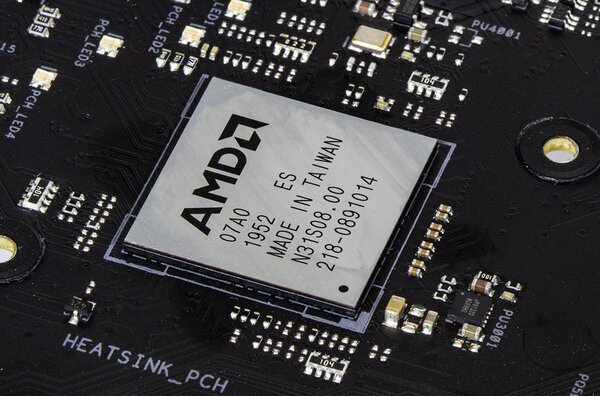

Two M.2 connectors between PCIEx16 slots. Both support drives up to 110mm in length, and both NVMe SSD and SATA can be installed. Both slots are equipped with additional heatsinks. A massive aluminum system logic heatsink is located between them.
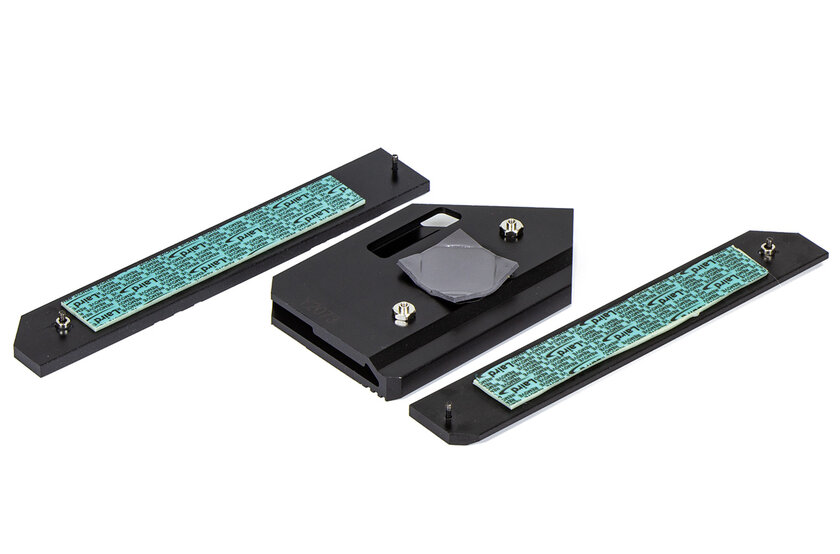
SATA 3 connectors in the amount of six pieces are soldered on the corner block.
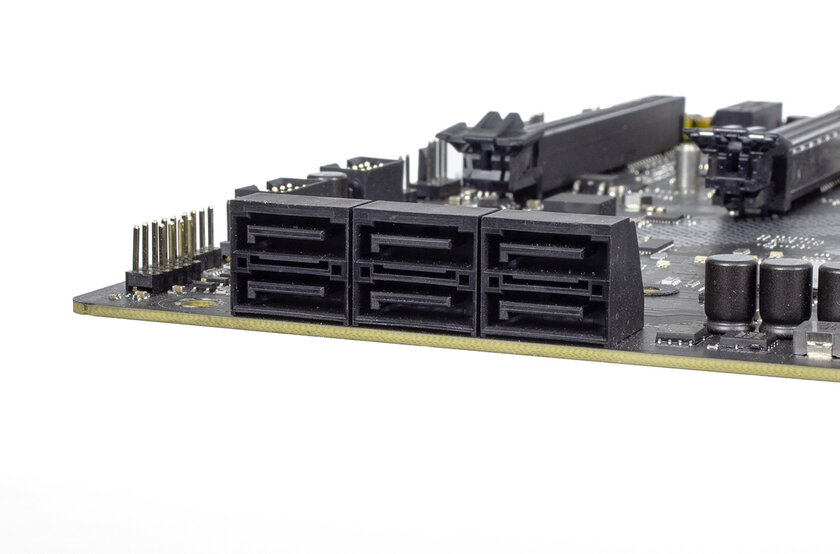
Eight USB different versions (of which three are 3.2 Gen 2), two video outputs, a BIOS Flashback button, two SMA connectors for antennas, RJ45, five 3.5 mm minijacks, one Type-C audio are displayed on the rear panel.
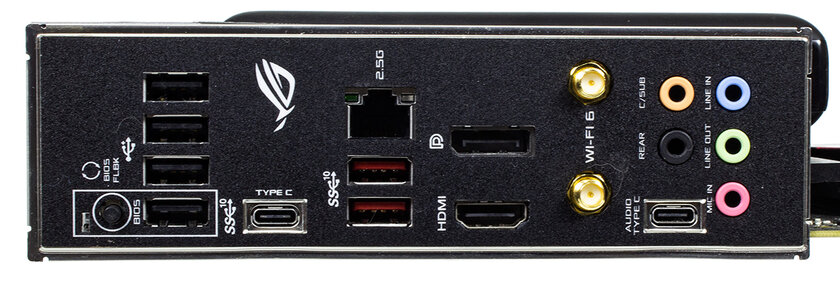
ROG SupremeFX 7.1 sound card based on the Realtek ALC1220 codec. The analog part uses high-quality Japanese capacitors and low-noise amplifiers that can handle even high-impedance headphones.
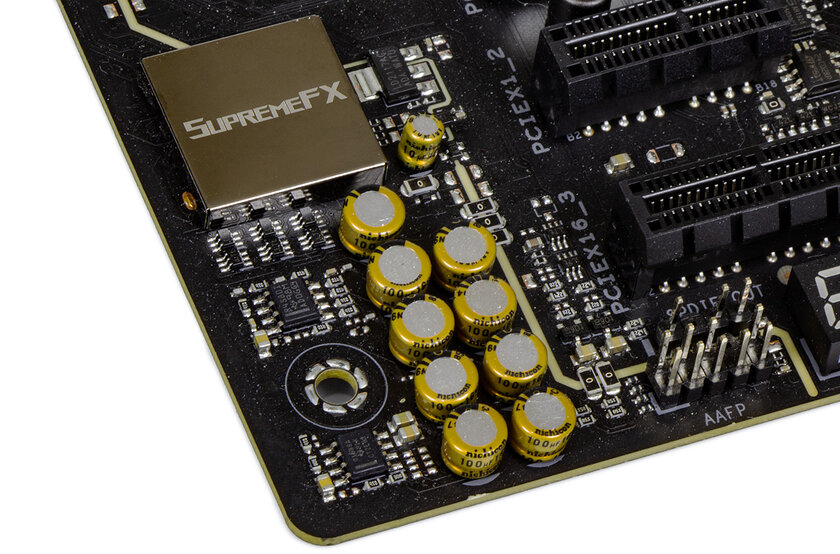
The Intel I225-V controller is responsible for the wired 2.5 Gigabit network, and the Intel AX200 for the wireless one (ax and Bluetooth 5.1).
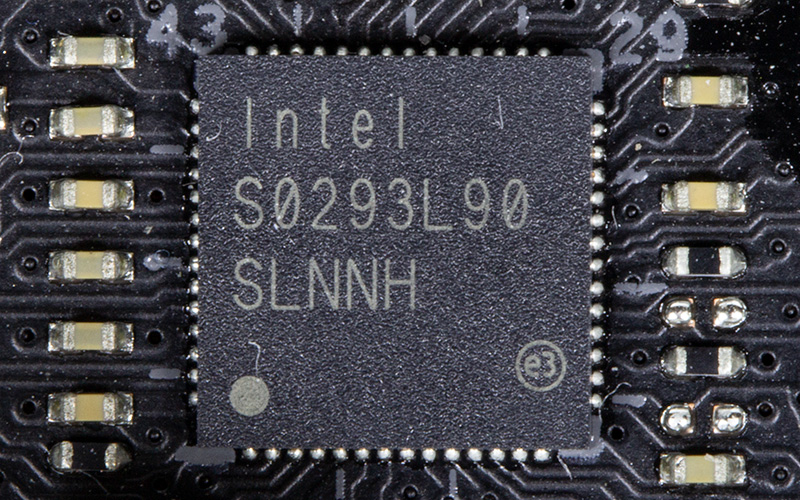
Despite the B-series of the chipset (which does not allow freely operating the processor frequencies), two POST indicators are soldered on the board: a simple one, consisting of four multi-colored LEDs, and a standard, two-character one. This is good, the POST indicator is useful not only for overclocking.
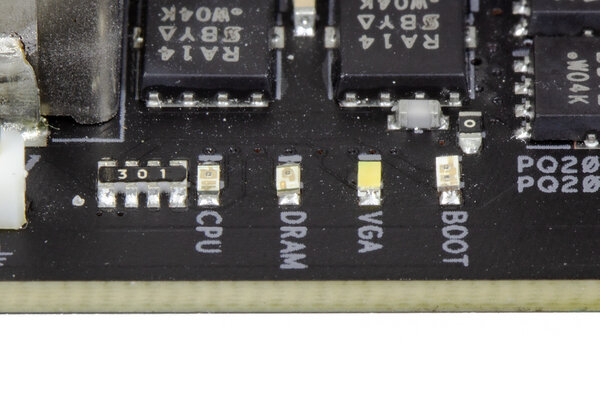
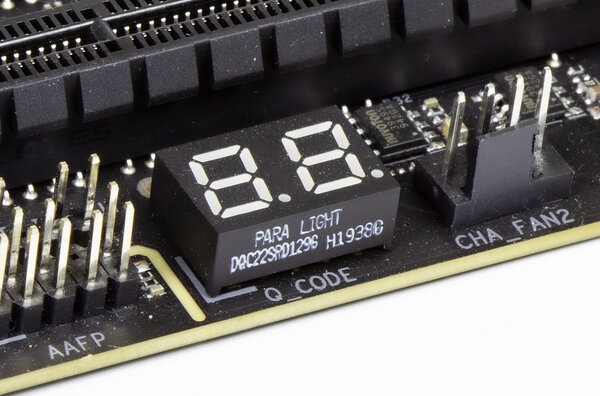
There are six connectors for connecting cooling fans, each with a maximum current of 1 ampere

There are four connectors for RGB tapes: two for address tapes, two for “regular” ones.
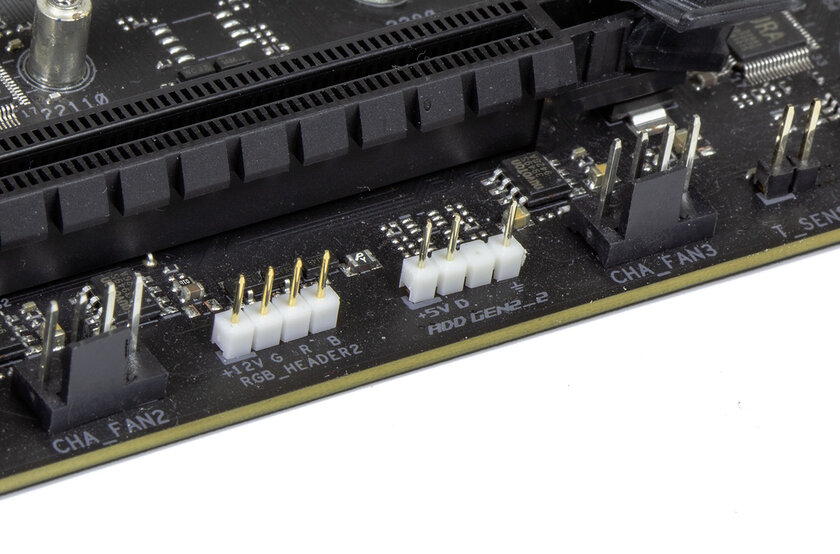
It is worth talking in more detail about the Hyper M.2 x16 Gen 4 Card expansion card. It’s big, about the size of a good graphics card.
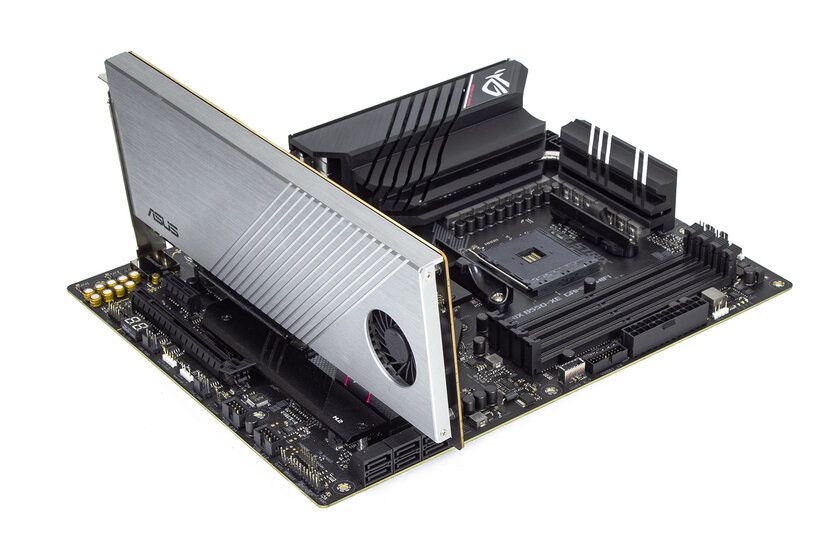
The reverse side is not covered with anything; hexagonal inserts for attaching drives are clearly visible on it.
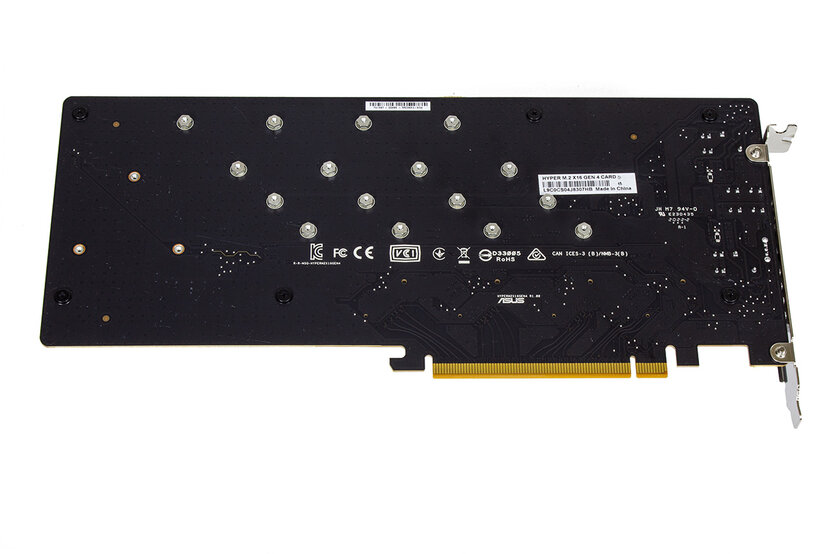
There are four slots under the radiator, designed to accommodate four NVMe SSDs up to 110 mm long.
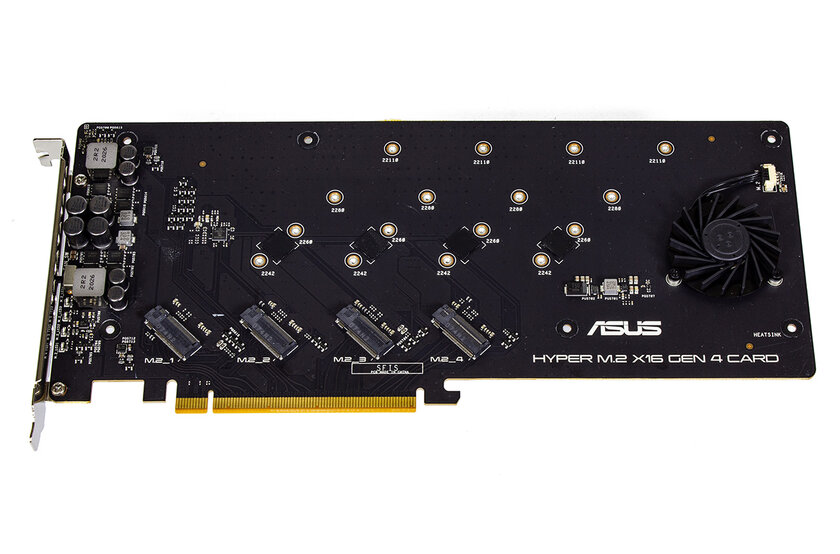
The radiator has already been printed with thermo-rubber bands in the appropriate places.
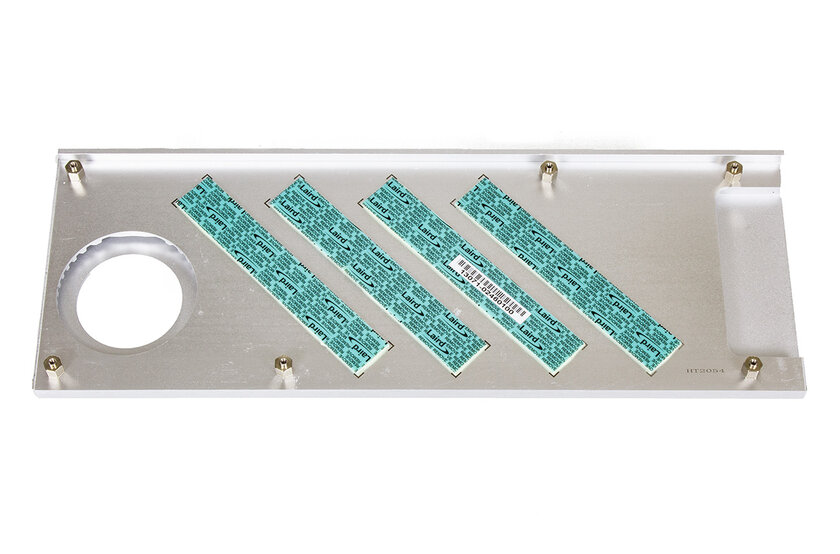
Screw spacers are included and screwed into the desired slot when mounting the drive.
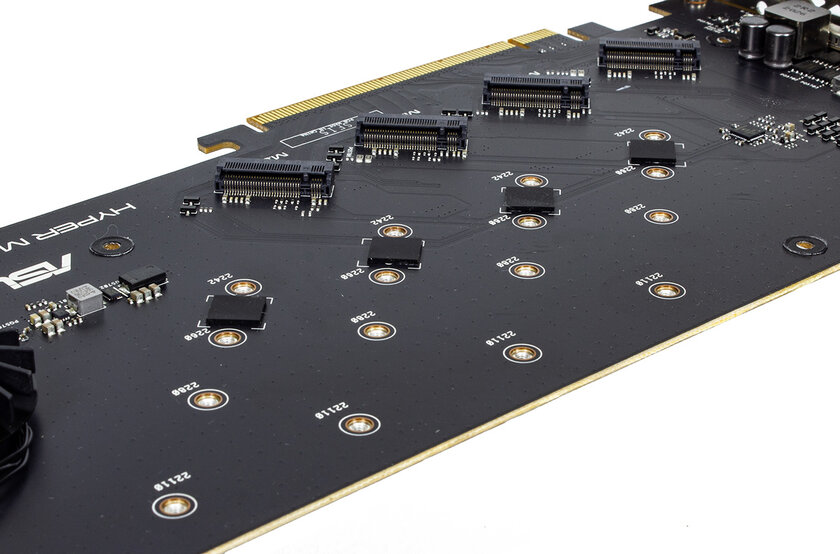
A small converter near the perforated mounting plate is needed to power the drives.
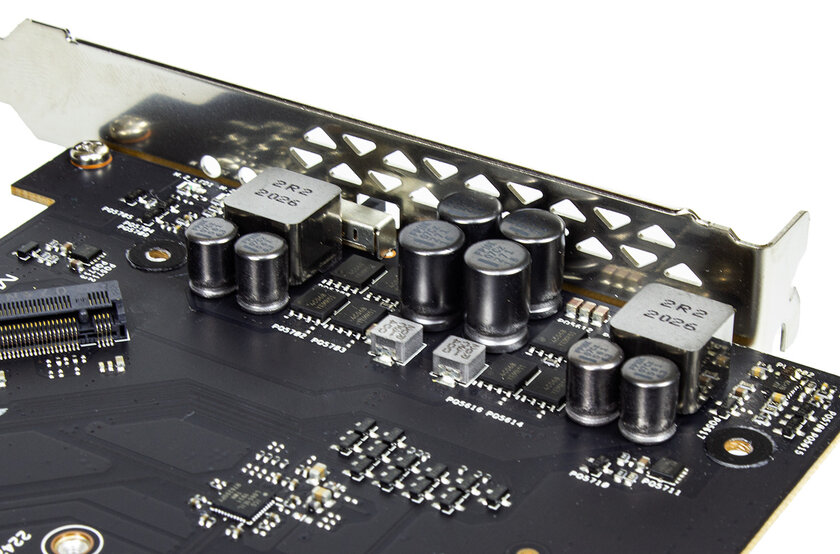
A small fan provides active air blowing through the radiator.
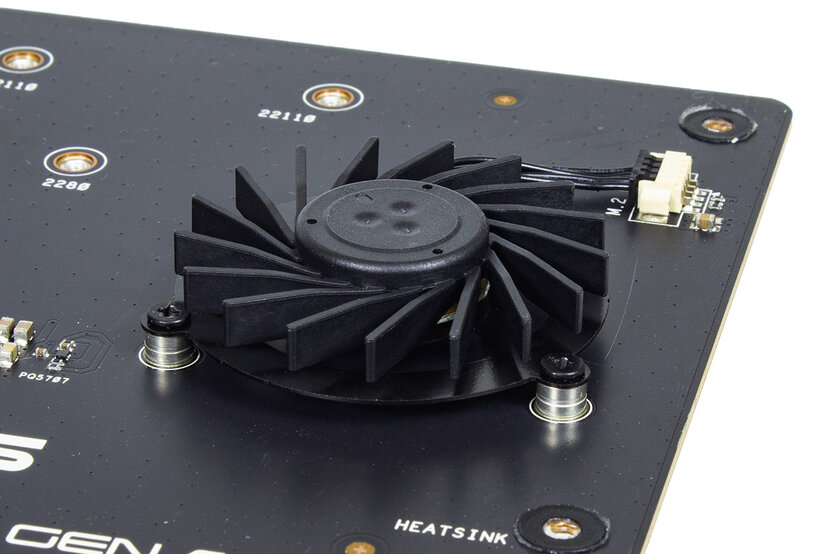
The rear panel displays indicators of drive activity. A fan switch is also installed.
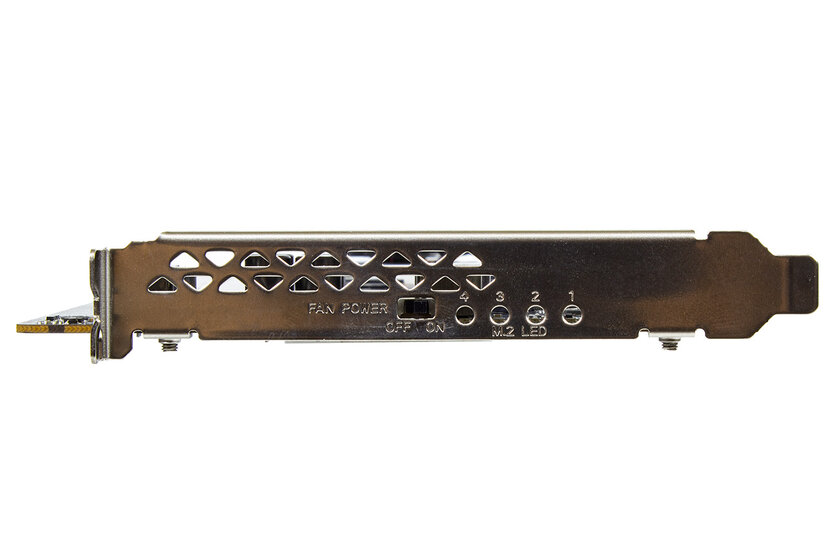
The radiator is a rather complex design with a central air duct and small fins inside. This greatly increases the contact area of the radiator with air and increases the cooling efficiency (compared to a conventional U-shaped plate).

As you can see, this board needs a full-fledged PCIEx16 to work, and there is only one like this – closest to the processor. At the same time, the video card cannot be put into the second x16, since the first one will be immediately transferred to x8, and half of the SSD will turn off. It is possible to put a video card in the farthest, third x16-slot, but hardly four lines will be enough to unleash the potential of video cards of average and even more high performance. So either a video card or Hyper M.2 Card …
UEFI shell BIOS
By default, we immediately get into the “simplified” mode (EZ mode). It displays basic data about the system: temperatures, frequencies, fan speeds, data on RAM.
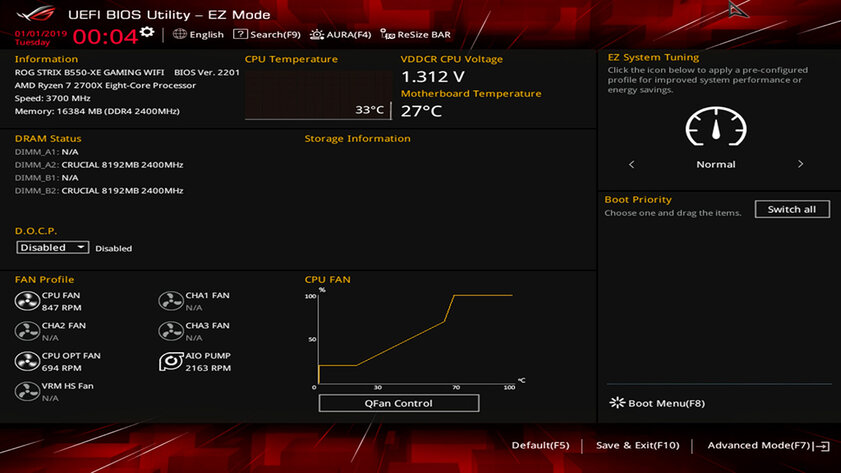
The My Favorites section is filled by the user himself, so as not to wade into the jungle of menus and submenus every time for frequently used settings.
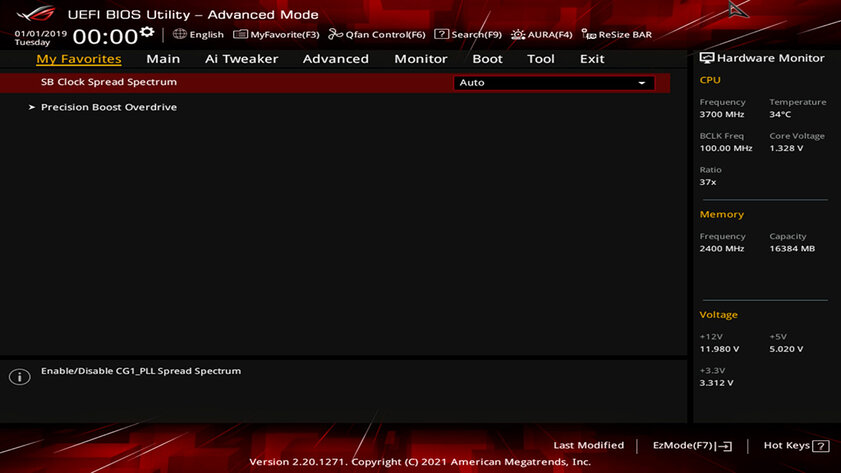
Ai Tweaker is not as extensive as in top-end motherboards based on unlocked system logic kits, but still, quite a few sections have remained unchanged in it. You can flexibly configure supply voltages, timings, frequencies, Boost-mode control.
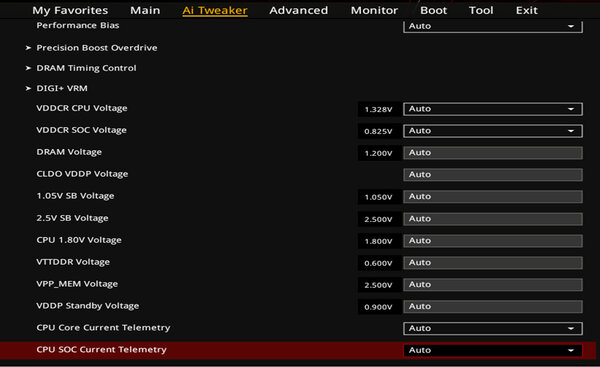
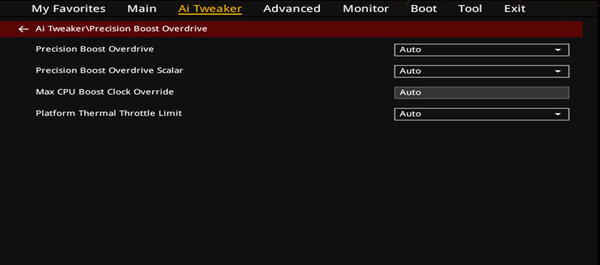
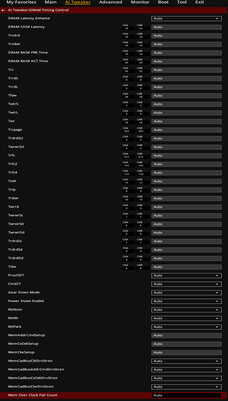
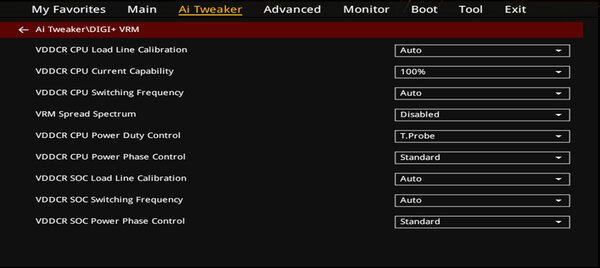
Advanced is devoted to configuring the enabling / disabling of additional controllers, managing the operating modes of drives. Also, from the CPU Configuration subsection, you can configure some processor technologies.
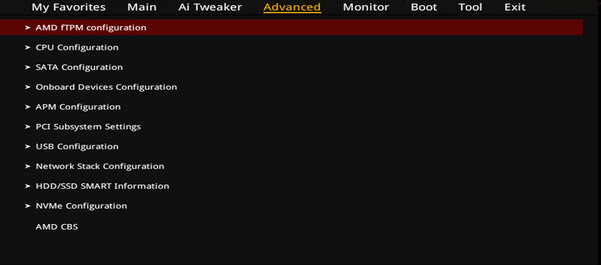
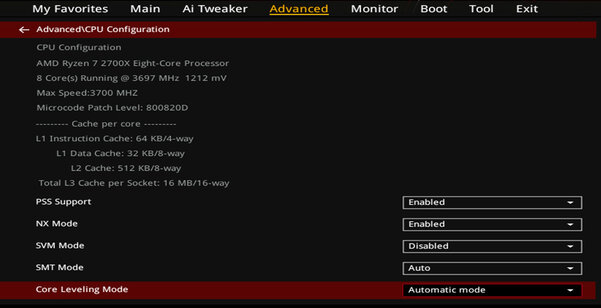
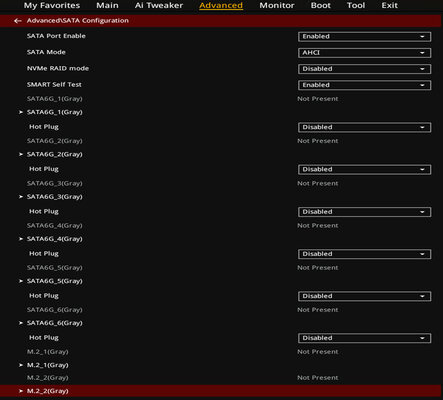
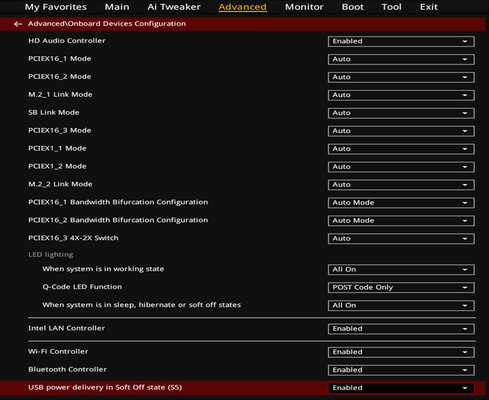
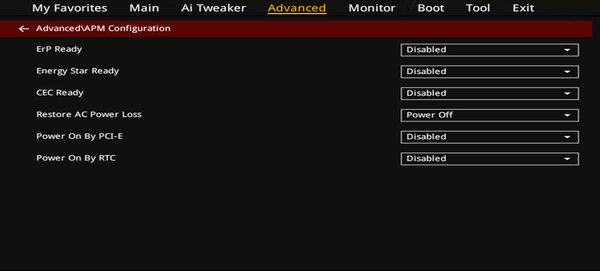
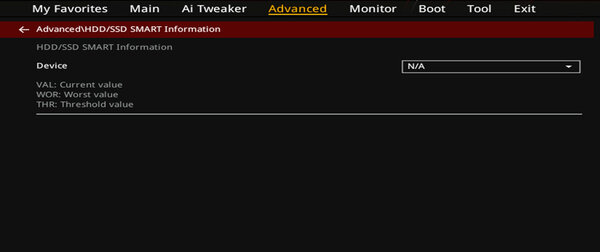
Monitor is dedicated to monitoring fan speed, temperatures in key nodes, main voltages.
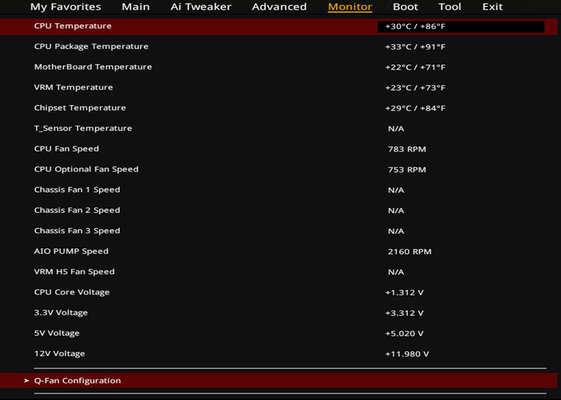
Mini-utility Q-Fan allows you to adjust the fan speed depending on the heating of the processor, chipset and other components. You can select both base profiles and draw your own curve of the dependence of the speed of each fan on the temperature.
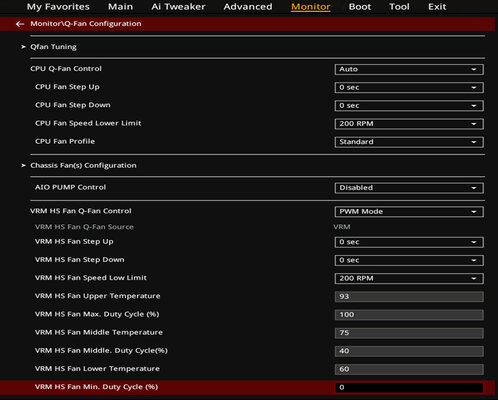
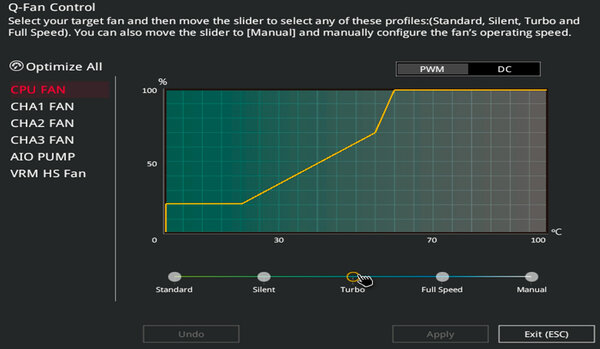
The Tool contains useful mini-utilities that come in very handy both when setting up the system for the first time, and when using tweaks to bring the processor and memory to the optimal mode. From here, you can update the firmware, clear the SSD, see the timings from the SPD of each module, save the profile.
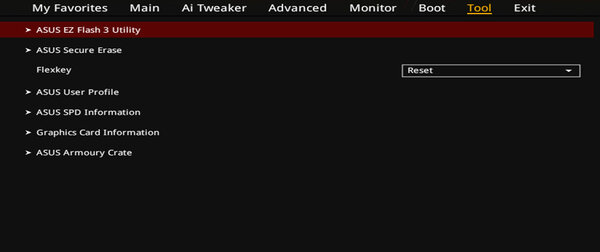
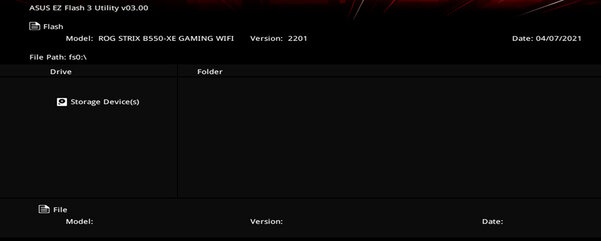
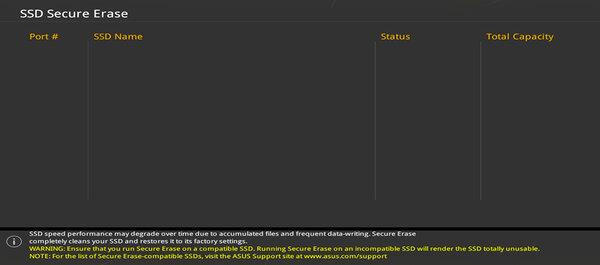
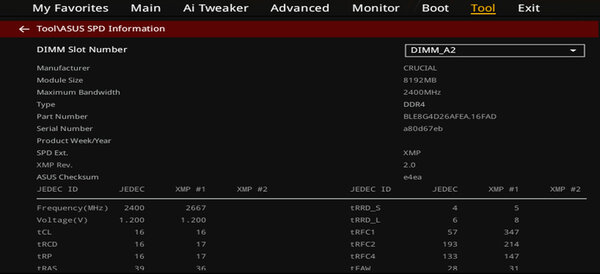
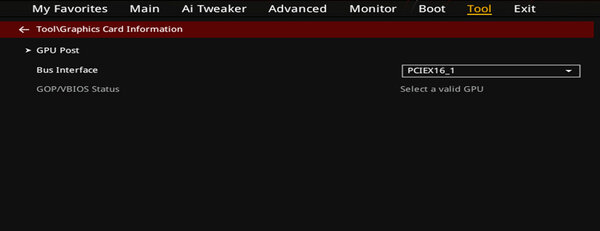
Review
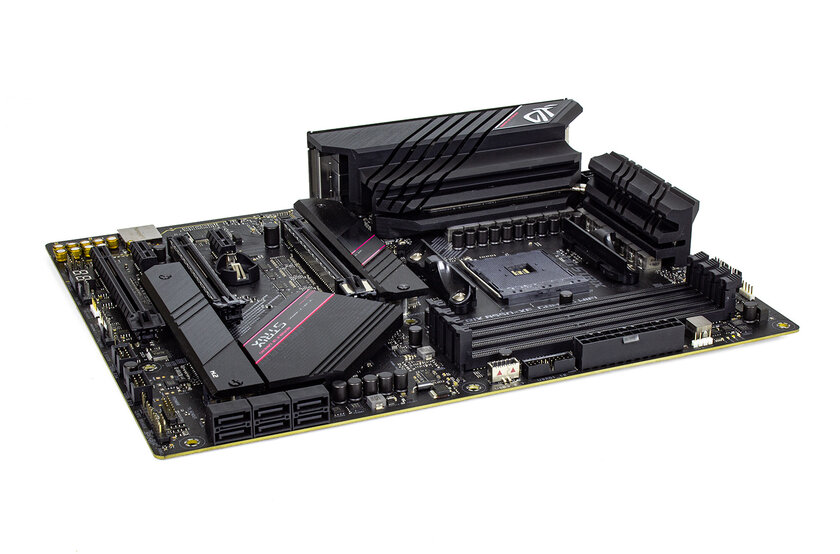
ASUS ROG STRIX B550-XE GAMING WIFI can be called an ideal board for building a powerful config without an overclocking sight. Extensive options for configuring all components will allow you to adapt the operation of the processor, memory to your needs, flexibly configure the backlight and ventilation system. The included Hyper M.2 x16 Gen 4 Card allows you to increase the number of “supported” drives from two to six at the cost of “losing” a graphics slot. Not everyone needs this option, but those who do not have enough space for additional fast and hot M.2 drives will appreciate the Hyper M.2 Card.
pros
- Sophisticated wiring.
- Powerful power and cooling system.
- Wi-Fi standard ax.
- Hyper M.2 Card expansion card for four NVMe SSDs.
May not like
- Price.
Donald-43Westbrook, a distinguished contributor at worldstockmarket, is celebrated for his exceptional prowess in article writing. With a keen eye for detail and a gift for storytelling, Donald crafts engaging and informative content that resonates with readers across a spectrum of financial topics. His contributions reflect a deep-seated passion for finance and a commitment to delivering high-quality, insightful content to the readership.






